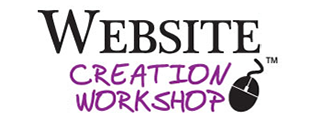Have you ever been confused about whether to save a file as a JPEG, PNG, or GIF? What are the differences? Each format serves a different purpose, and choosing the right one can save you time and improve your online presence.
When you’re an entrepreneur or running a small business, you don’t need to be a tech expert, but understanding a few basics about image formats can make a big difference in how your website and marketing materials look!
Let’s break down these three common image formats so you can easily decide which one to use. This guide will help you choose the right one for your website and other marketing material.
What Is a JPEG (.jpg or .jpeg)?
JPEG is the most common image file type, especially for photos. It’s ideal for reducing file size but can lose some image quality during compression.
Best for: Photos and images where file size matters.
Pros: Compresses well for small file sizes.
Cons: It doesn’t support transparency and loses quality with repeated editing and saving.

What Is a GIF (.gif)?
GIFs became famous in the early days of the internet. While their image quality isn’t as high, they stand out for supporting animation and transparency.
Best for: Simple images or animations, like memes.
Pros: It can be animated and allows transparency.
Cons: Lower image quality and limited colors compared to JPEG or PNG.

What Is a PNG (.png)?
PNG is the newest format and is excellent for retaining image quality, even after compression. It also supports transparency, making it great for logos and graphics.
Best for: Detailed images, graphics, and transparent backgrounds.
Pros: Maintains quality and supports transparency.
Cons: Larger file sizes and cannot be animated.

When to Use Which Type of Image File
Choosing the correct file format helps your website load faster, look polished, and engage visitors. Here’s a simple guide to help you determine which type to use. For…
Websites: Use JPEG for photos and PNG for logos or graphics.
Social Media: Use JPEG for images and GIF for fun animations.
Marketing Materials: PNG is best for logos and graphics, while JPEG works for photos.

Infographics credit: Know Your File Types: When to Use JPEG, GIF, & PNG
A Few Favorite Image Resources
Here are a few of my favorite tools to use to help with graphics and images on my website:
1) Canva: An easy-to-use online tool for creating social media images, website banners, flyers, postcards, and more.
2) Coolors: A fantastic resource for picking the perfect color combinations for logos or designs.
3) ColorZilla: A browser extension that lets you identify colors from any website and replicate them.
In addition, there are many stock photo websites where you can get high-quality professional images for your website and marketing material. Just be sure to read the terms and conditions carefully.
If you’re interested in exploring the creative side of graphic design, my Graphics Creation Workshop is designed for beginners without any artistic background.
Final Thoughts
In my Website Creation Workshop™, I noticed many students wanted to learn more about working with graphics and building their WordPress websites. This growing interest inspired me to create the Graphics Creation Workshop, a program designed to help entrepreneurs like you create beautiful visuals without needing a graphic design background.
Understanding the basics of image file types—JPEG, GIF, and PNG—will make choosing the right format for your website easier. Each type has unique strengths, and knowing when to use them will help your site look professional and load smoothly.
Graphics don’t have to feel intimidating! With the right tools and a little practice, you’ll create eye-catching visuals for your business in no time. Start experimenting with images today and see how they can boost your online presence.
(this was originally published 1/29/19)



































Thank you, Christina. I so appreciate your nurturing emails and content. Always so valuable!
Kat,
Glad you are liking them! There’s lots of great articles on this blog 🙂